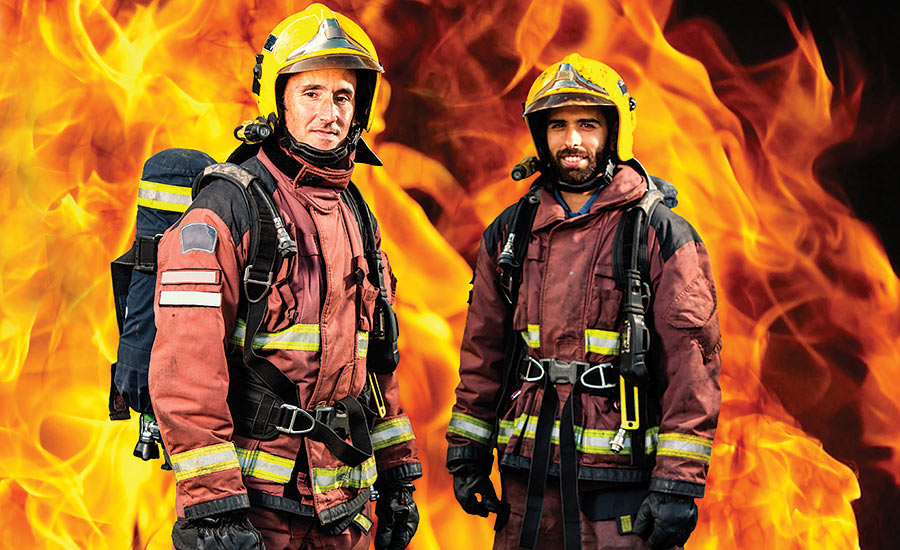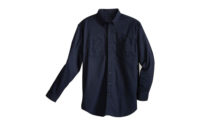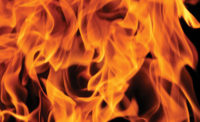One of the most important questions to consider when working near thermal hazards should be “Am I wearing the proper flame-resistant clothing”? The National Fire Protection Association (NFPA) defines flame resistant (FR) as “The property of a material whereby combustion is prevented, terminated, or inhibited following the application of a flaming or non-flaming source of ignition…”
Too often there are times when individuals experience thermal hazards while not wearing the proper flame-resistant clothing or no flame-resistant clothing at all. The result can be gruesome bodily injury that leads to disability or death. Initially, the fire or explosion may not cause tremendous injury, but improper clothing catches fire and continues to burn on the body until the source of ignition has been extinguished or burned out.
One of the first factors to consider is the user’s industry. Industries that rely on FR gear include oil refining, oil and gas drilling, mining, natural gas utilities, industrial electricians, and electric power utilities.
The most common hazards that cause burn injuries within these industries are flash fire and arc flash. Flash fire is commonly found in industries related to oil and gas drilling and natural gas utilities. According to the NFPA, a flash fire is defined as “a fire that spreads by means of a flame front rapidly through a diffuse fuel such as dust, gas, or the vapors of an ignitable liquid, without the production of damaging pressure.” Flash fire usually last only three seconds or less but can produce temperatures up to 1900 degrees. Three seconds may not sound like a very long duration, but again, non-FR clothing will ignite and continue to burn on the victim’s body causing the most horrible burn injuries. Proper FR clothing may give individuals time to escape the hazard with far less injury and more importantly their life.
NFPA 2112 standard
One of the most important ways to make certain the FR clothing you rely on will help prevent burn injuries is to make certain the product meets the NFPA 2112 standard. The NFPA 2112 is the “Standard on Flame-Resistant Garments for Protection of Industrial Personnel against Flash Fire.” It specifies minimum design, performance, certification requirements, and test methods for flame resistant garments for use in areas of risk. The intent of creating garments meeting this standard is so the garment itself does not contribute to the burn injury of the wearer, and reducing the severity of burn injuries.
While there are several tests and performance requirements for the FR garments that pass the 2112 standard, one of the most notable and well known is the ASTM F1930-15.
The ASTM F1930-15 is the “Standard Test Method for Evaluation of Flame Resistant Clothing for Protection against Fire Simulations using an Instrumented Manikin.” This test measures the thermal protection provided by different materials, garments, and clothing ensembles when exposed to specified fire.
Clothing is placed on an instrumented manikin fitted with thermal sensors. The dressed manikin is subjected to a simulated flash fire and the collected test data is used to provide predicted skin burn injury for a specific garment. A result of 50 percent predicted body burn or less is required for a garment to pass the NFPA 2112 standard. Informed users of FR clothing should seek out those options that offer the lowest predicted body burn percentage, not just a garment that “passes” the standard.
Arc flash hazards
Arc Flash hazards are commonly found in the electrical industry. According to the NFPA, an arc flash is “an electric current that passes through air when insulation or isolation between electrified conductors is no longer sufficient to withstand the applied voltage.”
Burns from arc flash account for 50 percent of all workplace electrical injuries. Some of the most severe arc flash events can reach temperatures up to 35,000 degrees in less than one tenth of a second. At these temperatures, copper and steels are vaporized in an instant. Each year more than 2,000 people are treated in burn centers with severe arc flash injuries.
The NFPA “Standard for Electrical Safety in the Workplace” is the NFPA 70E. This standard includes guidance for making hazard identification and risk assessments, selecting the appropriate PPE, establishing an electrically safe work condition, and employee training. It states that “employees shall wear FR Clothing wherever there is possible exposure to an electrical arc flash.”
Other factors you might consider include clothing configurations, colors, comfort, durability, and sizing. Coveralls, jeans, button-up work shirts, overalls, pullover shirts, T-shirts, and variations of insulated clothing give each user the opportunity to find clothing best suited to their specific application. An individual who may walk the floor all day might be comfortable in a coverall, while someone who climbs up and down onto trucks, ladders or other equipment might be more comfortable in a pair of jeans and a shirt. Shop around for different styles to best fit your needs.
The right fit
Finding the correct fit when sizing your FR clothing should not be taken lightly and could be a factor in determining one’s safety. A garment that is too loose could become entangled in machinery and pull workers into harm’s way. However, it is equally important not to wear FR clothing too tight. If clothing is tight, there will be a smaller air gap between the fabric and a person’s skin. Air gaps actually perform as a barrier to heat transfer between the material and skin. Tighter clothing could transfer more heat energy to the skin during a flash fire or arc flash than proper fitting garments.
Given the choice no one would enjoy wearing uncomfortable clothing to work every day, however many people do sacrifice comfort when wearing FR clothing. A simple trial or wear test with key employees can help identify the most comfortable clothing options for your specific application. If users are comfortable throughout the day they are much more likely to wear garments properly, thus reducing chances of needless injury.
Regardless of your garment choice, always make certain that each one meets all local, state, and federal safety requirements. Look for garments that are guaranteed flame resistant for the lifetime of the product and always follow the manufacturers’ laundering instructions.



